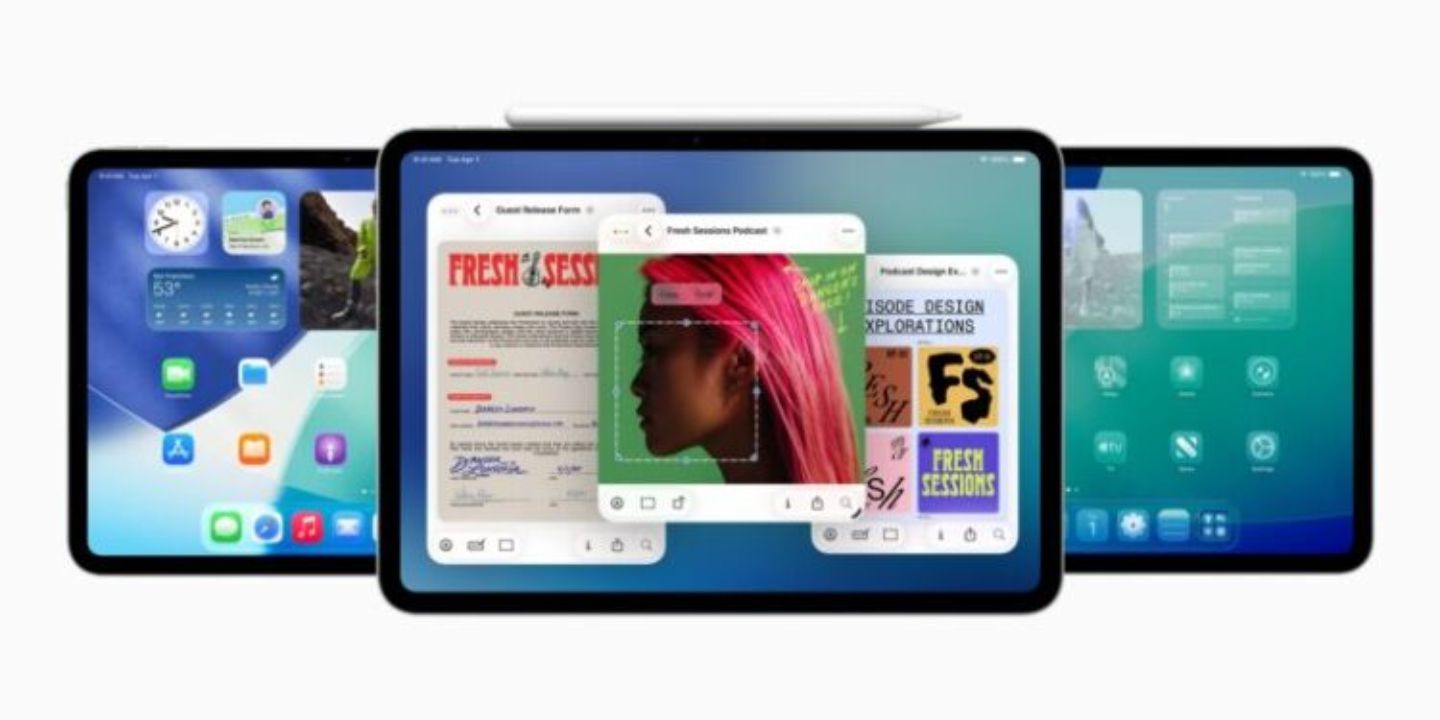iPadOS 26 Beta Backtracks on Major Multitasking Decision: Apple’s Balancing Act Between Tablet Simplicity and Desktop Power
Apple’s latest iPadOS 26 beta has reignited debate about the iPad’s true identity — is it a powerful desktop-class device or just an enhanced tablet with limitations? The question surfaced again as Apple quietly reversed a controversial multitasking change in its most recent developer beta, signaling internal tension over how much “desktop freedom” the iPad should actually offer.
According to developer reports, Apple’s decision to rollback stricter window management restrictions comes after widespread criticism from professional users. The reversal underscores an ongoing conflict within Apple’s design philosophy — between the clean, touch-friendly iPad interface and the flexible, multi-window environment that creative professionals demand.
Let’s break down what this change means, why Apple backtracked, and what it reveals about the company’s evolving approach to the iPad.
The Core Conflict: Tablet Simplicity vs. Desktop Freedom
Since the introduction of Stage Manager, Apple has attempted to transform the iPad into a true productivity device — one capable of running multiple apps simultaneously, managing external displays, and mimicking the windowing system of macOS.
However, iPadOS still faces the same identity crisis that has shadowed it since its separation from iOS: should it remain simple and intuitive, or evolve into a full desktop experience?
The iPadOS 26 beta cycle is the latest battleground for that debate. Apple reportedly introduced stricter window resizing and snapping behaviors in early builds, only to walk them back after backlash. These changes, while technical, carried major implications for how professionals use the iPad for real work.
Developers who rely on the iPad for coding, design, and media production argued that these limits stifled the very freedom Apple had promised with Stage Manager — freedom to resize, layer, and organize apps dynamically.
The message from users was clear: don’t turn the iPad into a locked-down “big iPhone.”
What the iPadOS 26 Beta Rollback Reveals
While Apple hasn’t publicly confirmed every detail, reports from beta testers and sources like Ars Technica indicate that the rolled-back feature likely enforced rigid window sizes or snapping behaviors — similar to the older Split View system.
This meant users couldn’t:
- Custom-size windows for specific tasks (e.g., a small calculator next to a full spreadsheet).
- Overlap multiple windows, breaking the illusion of a flexible desktop workspace.
- Move apps freely, as the OS automatically aligned or “snapped” them into zones.
Such restrictions fundamentally clash with how professional users interact with productivity tools. For a designer working in Procreate, a developer using Textastic, or a video editor multitasking between LumaFusion and Notes, being able to arrange multiple apps freely is essential.
By reversing this decision in the next beta, Apple effectively acknowledged what its professional audience has been saying for years: power users want control, not hand-holding.
Why Apple’s Decision Matters
To casual users, the difference between rigid and free-form windowing may seem trivial. But to professionals — the same group that invests in $1,200 iPad Pros and Apple Pencils — it’s a defining issue.
This reversal isn’t just about fixing a bug; it’s a philosophical correction. Apple’s engineers seem to be realizing that the success of iPadOS doesn’t lie in simplifying everything, but in allowing complexity for those who need it.
In short, desktop-style flexibility is no longer a luxury for iPad users — it’s an expectation.
The iPad’s Ongoing Identity Crisis
The iPad has always existed between two worlds:
- iOS, built for ease of use and touch interactions.
- macOS, designed for complex workflows and power users.
When Apple introduced iPadOS as a standalone platform in 2019, it promised to bridge that gap. And while features like the Magic Keyboard, Stage Manager, and external display support have moved the needle, the iPad still struggles to define itself.
Is it a professional tool or a casual consumption device?
Every time Apple introduces a restrictive feature — like limiting window size or disabling overlapping apps — it sends a mixed signal. These decisions seem to protect the iPad’s simplicity, but they also alienate professionals who depend on multitasking flexibility.
The reversal in iPadOS 26 suggests Apple is finally listening to its most vocal users — the ones who actually push the iPad to its limits.
The Role of Stage Manager: Apple’s Experiment in Hybrid Computing
Stage Manager, introduced in iPadOS 16, was Apple’s attempt to give users a more “Mac-like” multitasking environment. It allows multiple resizable windows, simultaneous app sessions, and even external monitor extensions.
However, Stage Manager has been divisive since launch. Critics say it feels half-finished — offering more power than Split View but less consistency than a true desktop OS.
By experimenting with restrictions in iPadOS 26, Apple may have been testing ways to make Stage Manager feel “cleaner” or more predictable. Unfortunately, this experiment backfired, as users prioritize freedom over neatness.
Professional Users Drive Apple’s Reconsideration
Apple’s most loyal iPad advocates are the creative professionals who use the device daily for design, animation, music, and development. These users form the backbone of the iPad Pro ecosystem.
Their feedback — often shared on developer forums and social media — is crucial. And this time, they were unanimous: the restrictive window behavior in the beta was a step backward.
One designer wrote,
“The iPad is supposed to free us from desktop constraints, not impose new ones. Why buy a Pro if I can’t work like a pro?”
Apple’s quick rollback signals responsiveness. It shows that the company still views professional users as key to the iPad’s evolution — even if it occasionally struggles to understand what they really need.
Why Apple Keeps Reversing Course
Frequent feature rollbacks are common in beta cycles, but in Apple’s case, they reveal something deeper. The company is still figuring out what the iPad should be.
Unlike macOS or iOS, iPadOS serves two masters: simplicity for average users and capability for professionals. Balancing both often means taking one step forward, one step back.
In the case of iPadOS 26, this backtrack suggests that Apple recognizes it can’t continue adding restrictions without alienating its most invested audience.
A More Measured Approach for iPadOS 26 Final Release
So what does this mean for the final public version of iPadOS 26?
If Apple’s recent actions are any indication, the company is shifting toward a refinement strategy — polishing what works instead of reinventing everything.
Expect:
- Improved Stage Manager performance and smoother animations.
- More intuitive gestures for multitasking.
- Better support for external displays without resolution or app density limits.
- Optimized memory management for power users juggling large workflows.
In short, rather than rewriting the multitasking rulebook, Apple seems ready to perfect the experience that already exists.
The Bigger Picture: Apple’s Vision for the iPad
Apple’s vision for the iPad has always been ambitious — to create a device that’s as intuitive as a phone and as powerful as a laptop.
However, that ambition creates constant friction between control and freedom. Every time Apple simplifies, it risks alienating power users. Every time it opens the door to complexity, it risks confusing casual ones.
The iPadOS 26 beta reversal shows Apple’s current strategy: listen first, refine second. Rather than forcing users into new habits, Apple is letting the platform evolve organically — shaped by feedback from its most experienced audience.
If successful, this could mark the start of a more transparent, collaborative development process between Apple and its developer community.
What Users Can Expect Going Forward
As iPadOS 26 moves closer to public release, Apple’s challenge remains the same: to make multitasking powerful without making it overwhelming.
We’re likely to see:
- Stable, flexible windowing across all supported devices.
- Consistent behavior between iPad and Mac for cross-platform users.
- Deeper integration with Apple Pencil, Magic Keyboard, and external apps.
- Expanded pro apps, such as Final Cut Pro and Logic Pro for iPad, taking advantage of the OS’s new capabilities.
If Apple can strike this balance, iPadOS 26 may finally deliver on the long-standing promise of turning the iPad into a true all-in-one productivity machine.
The Verdict: Apple Learns to Let the iPad Breathe
The iPadOS 26 beta reversal may seem minor, but it’s a strong indicator of Apple’s shifting mindset.
After years of tight control over how users interact with their devices, Apple appears to be embracing flexibility — at least for its professional audience.
By listening to feedback and backtracking on restrictive multitasking rules, Apple has shown a willingness to let the iPad breathe.
The company’s ultimate success with iPadOS 26 will depend not on flashy new features, but on whether it finally delivers what users have been asking for all along: true freedom to work, create, and multitask their way.
FAQs About iPadOS 26 Beta and Multitasking
1. What is new in iPadOS 26?
iPadOS 26 introduces improved multitasking performance, enhanced Stage Manager flexibility, and better external display support.
2. What change did Apple roll back in the iPadOS 26 beta?
Apple initially introduced stricter window management limits but reversed them after user feedback, restoring full control over resizing and overlapping windows.
3. What is Stage Manager in iPadOS?
Stage Manager is Apple’s advanced multitasking feature that allows resizable app windows and external monitor support for a desktop-like experience.
4. Why did users criticize the multitasking change?
Professionals felt the new restrictions limited workflow flexibility, making the iPad feel less like a productivity tool and more like a locked-down tablet.
5. When will iPadOS 26 officially release?
Apple is expected to release iPadOS 26 in late 2025, following several beta versions that incorporate developer feedback.
6. Will iPadOS 26 make iPads more like Macs?
While Apple aims to bring desktop-like power to iPads, it maintains a unique interface optimized for touch and portability.
7. Which devices support iPadOS 26?
iPadOS 26 will support recent iPad, iPad Air, iPad mini, and iPad Pro models, though advanced multitasking features may be limited to M-series chips.
8. Can you resize windows freely in iPadOS 26?
Yes. After user backlash, Apple restored the ability to freely resize and overlap windows in Stage Manager mode.
9. How does iPadOS 26 benefit professional users?
It enhances multitasking, speeds up performance, and improves app-to-app collaboration — key for designers, developers, and video editors.
10. Will Apple continue to refine multitasking features?
Absolutely. Apple is expected to keep fine-tuning multitasking throughout future updates, striking a balance between simplicity and power.
Conclusion
The iPadOS 26 beta reversal isn’t just a small technical tweak — it’s a glimpse into Apple’s evolving philosophy.
The company is slowly learning that flexibility equals power, especially for the professionals who rely on the iPad daily. By reembracing user freedom, Apple might finally be paving the way for the iPad to become what it was always meant to be — a device that bridges creativity, productivity, and freedom without compromise.
In 2025, iPadOS 26 isn’t just another update; it’s Apple’s statement that the iPad’s future lies in empowering the user, not restricting them.

